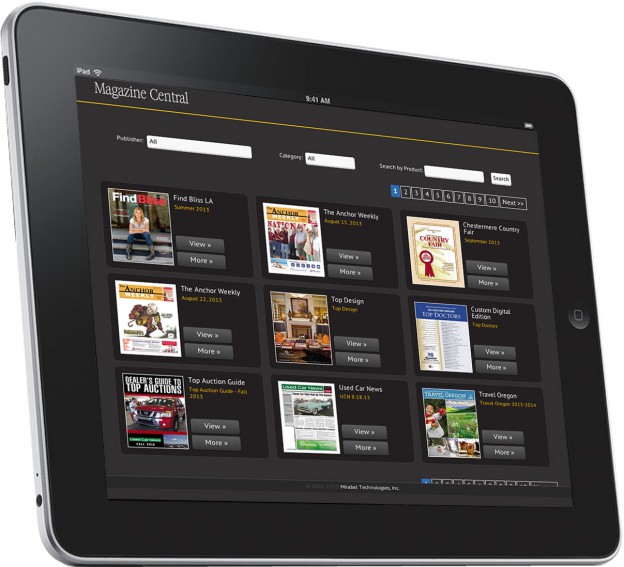5 Ways to Increase Profits in Tablet Advertising
A recent industry survey revealed that a quarter of its respondents had engaged with digital magazines each month, thus underlining the growing popularity and acceptance of magazines in the tablet format. This is bringing in advertisers, but is it really making the medium viable and profitable? Tablet advertising is both a nascent and a niche medium, and advertisers and publishers alike are still coming to terms with what works for the medium and how.
Though the primary factor driving success is a sense of familiarity between the paper and digital versions, the same axiom can not be superimposed on to the tablet advertising sphere. Publishers and advertisers must find the niche features that drive tablet advertising. Here are a few important features to make tablet advertising workable:
1. Innovation: According to a paper published by global consulting major Deloitte, the size screen of tablets was the fundamental difference driving up their usage levels and monetization factor. “The usability of a screen ratchets up with size. Ten-inch tablet screens have four to eight times more surface area than smartphones, but usability, usage and advertising effectiveness may be multiples of that,” said the paper. This is clear evidence that an ad copy meant for smartphones should be blown up in size to be effective on a tablet, while retaining high resolution. The increased screen space offers both creative and innovative freedom that needs to be better utilized.
2. Interactivity: The Association of Magazine Media (MPA) highlighted the fact that over half of the respondents in a survey agreed to reading and/or clicking advertisements on tablets. For all the evangelists of interactivity on mobile/tablet devices there could be no better news. The larger screen space coupled with easier interactivity with the device makes for a compelling case for creating innovation and engaging advertising campaigns. Further bolstering the factor of interactivity is that close to 80 percent use tablets in their living rooms and bedrooms; and the highest levels of interactivity as per a survey by the UK Internet Advertising Bureau were seen after 7 in the evening –indicating that the device is used in the leisure time as opposed to being at work or being otherwise engaged. “This suggests that content is consumed when people are in a relaxed environment and, therefore, advertising should be tailored to reflect this,” said the UK Internet Advertising Bureau report.
3. Insight: If there’s one thing that digital advertisers agree upon it is their aversion to paint the audience in ‘broad strokes.’ As publishers, it is important to provide enough metrics regarding the readers to the advertisers. To be able to profile the audience and target them – based on their location, preferences and liking – is likely to be the driver of future expansion of revenues in tablet advertising. Google recently launched its ‘Tablet targeting’ feature and indicated that it would help advertisers reach consumers in a more relevant manner. “Advertisers will be able to access the larger canvas of the tablet but with the location-targeting precision and capabilities of Google ads for smartphones,” said Google Product Manager Surojit Chatterjee, in the Google’s Blog post.
4. Engagement: A similar report by UK IAB remarked that over 51 percent of the respondents used tablets while watching TV, giving advertisers scope for creating hybrid campaigns that pull together both media to create engaging advertising. Laura Chaibi, Director of Global Research at Yahoo points out that broadcast media began by appealing as print and appealed to the sense of vision and touch; grew with radio that brought sound and later television fused the visual and audio. “(The tablet as a) device is the only one – to date – to best tackle the core three senses of sight, sound and touch together. There is an opportunity for brands no other medium to date can give you the sensory engagement and experience tablets provide,” said Chaibi.
5. Intuitiveness: The factor that determines the engagement levels for an advertising campaign is its intuitiveness – to make the viewer feel that he or she is in control and is driving the action. Campaigns that both evoke response while making it easy for the audience to understand how and what would happen next, are the ones that have the higher engagement levels. According to a comScore report, Tablet users are three-times as likely to watch a video when compared to users on a smartphone and yet the key to sustaining these levels would depend on the intuitive factor of the advertisements. Does the ad break the reader’s flow or does it add to the overall tablet experience – that would be the deciding factor on sustaining reader interest.
Giving attention to all of these points can make tablet advertising a profitable medium. As more people choose to view their magazine content on magazines, this will be an important area to focus on as part of your overall approach.





